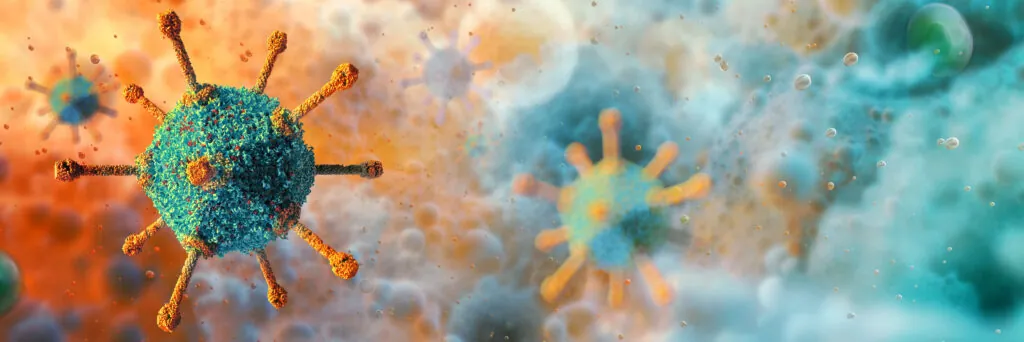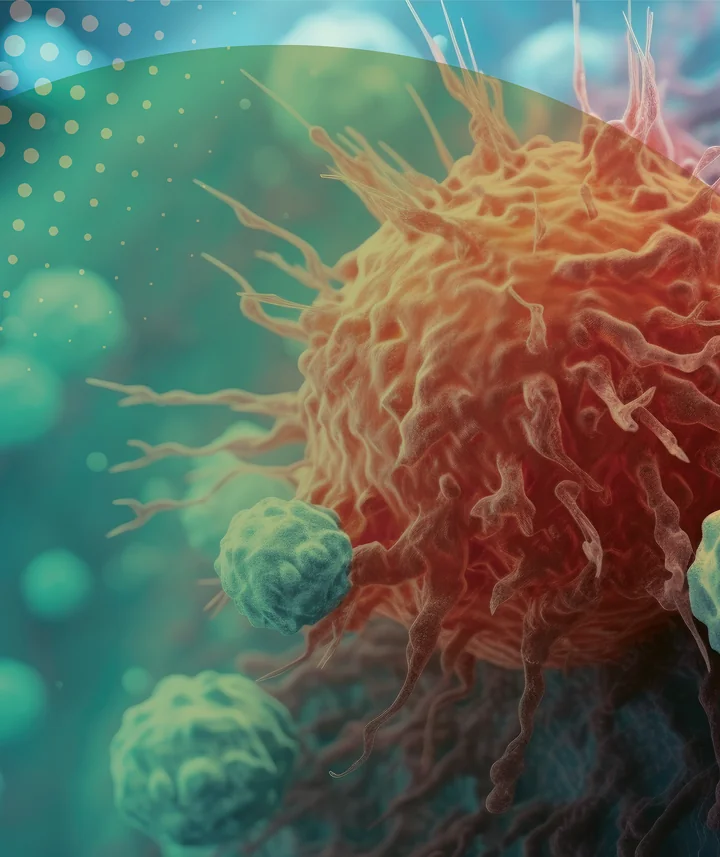Opportunities for change

The Steering Committee discussion was complemented by a comprehensive literature review to identify the key barriers to treatment across these three areas, informing this section of the report. Published literature was retrieved through a literature search in PubMed while other literature including policy documentation was collected through interaction with Steering Committee members and handsearching.
While some challenges are more specific to certain regions, the Steering Committee has focused primarily on those that are applicable across countries and indications. Progress has been made in all these areas, and case studies are included here and, in an appendix, to provide inspiration and demonstrate how and where change is possible.
5.1. Awareness and understanding of CAR T-cell therapy
5.1.1. Limited knowledge or experience of CAR T-cell therapy among some HCPs and preference for other treatments
For many patients, community-based HCPs (those beyond designated treating centers) make the initial referral for CAR T-cell therapy. In the US, more than half of people with cancer receive care within community-based practices,63 and CAR T-cell therapy treatment centers depend on community-based hematologists or oncologists for referrals.64
However, knowledge gaps among some HCPs around CAR T-cell therapy and the need for timely treatment may limit referrals for eligible patients.8 A 2024 IQVIA Institute analysis covering seven countries (Australia, Canada, France, Germany, Italy, Spain, and the United Kingdom) found that ~70% of referring physicians stated they would benefit from more, or a lot more, information about CAR T-cell therapy.6
In addition, HCP preferences for other treatment options and established standards of care can be a barrier to referral for CAR T-cell therapy – in one US study, physician preference for conventional treatments was the primary barrier to CAR T-cell therapy for 32% of patients (n=493) treated in community practices.65
Nonetheless, the use of CAR T-cell therapy has increased in recent years,66 and educational
initiatives, such as online educational materials, peer-to-peer best practice sharing,67,68 and dedicated educational sessions at congresses69 are being implemented, and knowledge gaps are being filled. CAR T-cell therapy specialists are also proactively educating referring centers to improve patient care and optimize the referral and treatment process.70 It is vital that this happens consistently across geographies and on an ongoing basis.
5.1.2. HCP reservations in referring people for CAR T-cell therapy
A survey of two groups of US community oncologists interviewed at two separate time points (Feb 2019 (n=59), Nov 2019 (n=55)) found that 46% and 29% had not referred any patients for CAR T-cell therapy, citing cumbersome logistics, high cost and toxicity as the main barriers.62 While referring HCPs’ knowledge of and experience with CAR T-cell therapy have improved over time, reservations about CAR T-cell therapy may persist.62
Another survey of US community-based hematologists and oncologists (n=45) in 2021 found they had limited experience with CAR T-cell therapy in multiple myeloma and expressed concerns about its safety and potential toxicity (33%), access (24%) and cost (18%).71
Community healthcare professionals are on the frontlines of cancer care, serving as trusted partners to patients and their families throughout their treatment journey. Ensuring these clinicians and their patients have access to clear, consistent, and evidence-based information about CAR T-cell therapy is essential for advancing equitable cancer care."


Supporting community oncology to deliver CAR T-cell therapies in the US
Access to CAR T-cell therapy is still concentrated in large academic medical centers, creating logistical challenges for patients in rural or underserved areas.72
In 2021, the Association of Cancer Care Centers (ACCC) launched the “Bringing CAR T-cell Therapies to Community Oncology” initiative to help community cancer programs and practices obtain the education and tools they need to offer CAR T-cell therapy locally.73
The ACCC resources offer guidance and tips on the operational infrastructure needed for a successful CAR T-cell therapy program.71,74 By bridging knowledge and infrastructure gaps between academic and community settings, the ACCC initiative is helping to expand access to CAR T-cell therapy, enabling more patients to receive treatment closer to home.
5.1.3. Patient reservations around the safety profile and efficacy of CAR T-cell therapy
Patients who are eligible for CAR T-cell therapy may also have some reservations about the treatment. In a study assessing key barriers to CAR T-cell therapy (n=2,035), patient refusal was a barrier in approximately 33% of cases.63

It is understandable that the decision to receive CAR T-cell therapy raises uncertainties for some people. These may include concerns around the management of potential side effects and the long term safety profile of genetically modified T-cells,75 worries about travel, time off work, and financial burden.76 In an HCP survey in seven countries (Australia, Canada, France, Germany, Italy, Spain, and the United Kingdom), patient choice (due to clinical or side effect considerations) was key reason for patients not receiving CAR T-cell therapy according to treating physicians (n=129 (ranging from 17% in Australia to 54% in the UK). Patient choice due to logistical or administrative reasons was also cited by HCPs in most countries (ranging from 4% in France to 46% in the UK).59
Providing clear accessible information can help people understand their treatment options, including the balance between adverse event risks and survival improvements.77 While patients report an initial drop in quality of life and increase in psychological distress when initiating CAR T-cell therapy, both measures improve significantly within six months post-infusion (p<0.001) based on longitudinal model (n=103). In fact, at six months, reported quality of life is no different from that of the general US adult population.78 CAR T-cell therapy has also demonstrated clinically meaningful improvements in quality of life compared to standard of care therapy after 100 and 150 days.55 A meta-analysis revealed that CAR-T cell therapy improves patient-reported outcomes (PROs) in six domains including general health status, pain, fatigue, depression, social function, and cognitive
function.79 In the TRANSFORM study, the proportion of patients (n=90) with meaningful improvement in quality of life, cognitive functioning, and fatigue was higher at six months in patients provided with CAR T-cell therapy than those given standard of care.80
There are also concerns around the demands on caregivers.81 The role of a dedicated caregiver is essential, particularly to provide care and support after CAR T-cell therapy, recognize early signs of treatment effects and immediately seek medical attention if needed. In the US (n=80) and UK (n=53) respectively, 36% and 27% of HCPs reported lack of caregiver support as a barrier to referral for CAR T-cell therapy.9
The burden on caregivers should not be overlooked. A longitudinal study of caregivers (n=69) of patients undergoing CAR T-cell therapy revealed that they have significant impairments to quality of life, with a substantial proportion experiencing psychological distress, highlighting the need for more supportive care interventions.79
Patients have the fundamental right to consider their treatment options and choose what works best for them and their loved ones. To support them in making an informed choice, we need to make sure they have access to digestible, culturally sensitive and evidence-based information about CAR T-cell therapy, at the right time in their care journey."


5.1.4. Identifying patients that are eligible for CAR T-cell therapy
Early and accurate identification of eligible patients is crucial for the success of CAR T-cell therapy, maximizing its potential benefits. Delays can lead to disease progression, and can sometimes mean that people are no longer eligible for treatment.82 Data has shown that in LBCL, when used earlier in the pathway, CAR T-cell therapy could potentially improve rates of sustained remission when compared with stem cell transplant, the historical standard of care, in refractory patients or in patients that relapse within 12 months from previous line of therapy.41
While the use of CAR T-cell therapy in the real-world setting has expanded beyond the criteria used in clinical trials, a lack of knowledge among some non-specialist or referring HCPs about the patient selection criteria may limit referral of eligible patients.8 For example, some HCPs may use transplant eligibility criteria to assess patient eligibility for CAR T-cell therapy, but the two are not the same.
The eligibility criteria for CAR T-cell therapy can vary based on multiple factors, including type of product, prior therapies, comorbidities, Eastern Cooperative Oncology Group (ECOG) performance status and organ function., Interpretation of these eligibility criteria is often dependent on the experience of the HCPs and centers with administering CAR T-cell therapy. In one study, 17% of US HCPs (n=64) and 27% of UK HCPs (n=49) cited lack of clarity over eligibility criteria as a key challenge with the CAR T-cell therapy eligibility determination process.9
Given the rapidly evolving evidence in the real world, there is growing recognition that a multidisciplinary discussion between referring and treating clinicians should take place to enable early and accurate identification of eligible patients, particularly in situations with borderline parameters for some of the criteria.8 Supporting accurate, efficient and early identification and referral of patients eligible for CAR T-cell therapy can also be done through the development of clinical guidelines and clinical education programs.
A person’s potential eligibility for CAR T-cell therapy should be assessed on a case-by-case basis, with referring and treating physicians working together. This is one of the core principles of the RECUR framework for large B-cell lymphoma, developed by the American Society for Transplantation and Cellular Therapy, the Association of American Cancer Institutes and the Association of Cancer Care Centers."


Identifying patients who are eligible for CAR T-cell therapy in the US
For CAR T-cell therapy, timely identification and referral are important first steps in helping eligible patients get the most out of treatment. Delays in referral could lead to disease progression, making some people ineligible for treatment.8
In 2024, the American Society for Transplantation and Cellular Therapy (ASTCT), the Association of American Cancer Institutes (AACI), and the Association of Cancer Care Centers (ACCC) launched the RECUR initiative – a multidisciplinary program that aims to empower oncologists, HCPs and patients with a strong understanding of the factors needed for successful CAR T-cell therapy.
The three organizations involved recognized that an effective framework for patient identification should include both clinical and non-clinical factors that could influence eligibility. With a focus on large B-cell lymphoma (LBCL), they created the RECUR framework to support rapid identification in community settings and referral to accredited treatment centers.
If they RECUR, you should refer:85
- Relapsed/refractory LBCL: Any person with relapsed or refractory LBCL should be referred for a consult with a CAR T-cell therapy specialist
- Every age and comorbidity: Age and comorbidity should be evaluated on a case-by-case basis by a CAR T-cell therapy specialist
- Caregiver support: Discuss the need for support and continuity continuum of care throughout the patient journey
- Urgency to recommend consult: Rapid identification and referral is important for people to undergo timely evaluation for CAR T-cell therapy
- Receive patients returning post-CAR T: Streamline communication across teams within the local network to optimize local care of patients’ local teams to optimize care for people returning after CAR T-cell therapy
Building on the above, the RECUR initiative hosts educational programs, provides resources and acts as a platform for knowledge exchange to support HCPs and patients in navigating CAR T-cell therapy.84

Supporting early identification and referral in Spain
Timely identification and referral are an important first step in the patient journey to CAR T-cell therapy. The delivery of CAR T-cell therapy is influenced by both clinical and system factors, which determine whether eligible patients are offered treatment.
In 2024, three leading professional societies in Spain launched the IDEaL project (Identificación y Derivación Temprana de Pacientes con Linfoma Candidatos a Terapias CAR-T). Its aim was to analyze the CAR T-cell therapy landscape in Spain, and to develop recommendations to improve identification and referral for eligible people living with lymphoma. The experts involved represented the Spanish Society of Hematology and Hemotherapy (SEHH), the Spanish Group for Lymphoma and Bone Marrow Transplants (GELTAMO) and the Spanish Group for Hematopoietic Transplant and Cell Therapy (GETH-TC), with funding provided by Gilead and Kite.86
The IDEaL project’s CORE working group consisted of 9 hematology specialists, who developed practical recommendations and specific guidance for each type of lymphoma with a European Medicines Agency approved indication for CAR T-cell therapies. They are available online and free to use, supporting hematology specialists around Spain in determining eligibility for CAR T-cell therapy.86
Increase awareness and understanding of CAR T-cell therapy
To expand access, it is critical to continue to enhance knowledge and awareness of CAR T-cell therapy across all stakeholders so that:
- HCPs in referral centers identify potentially eligible patients for CAR T-cell therapy early and refer to specialists for consultation with urgency
- Eligible patients and their caregivers understand the clinical benefits and risks, as well as logistical and financial considerations of CAR T-cell therapy to make informed choices about treatment
- Policymakers and payors understand the value of CAR T-cell therapy and collaborate with stakeholders to address systemic barriers to treatment and care

5.2. Resources and capacity to deliver CAR T-cell therapy
5.2.1. Treatment delivery limited to large, accredited treatment centers
Some countries concentrate the use of cellular therapies like CAR T-cell therapy to a limited number of centers. A review of 25 countries revealed that CAR T-cell therapy center density varied significantly, from 0.3 to 11.4 per 10 million inhabitants – a much higher variation when compared to allogeneic or autologous hematopoietic cell transplantation (HCT) centers.87 In the US, some centers are situated within miles of each other, while other states have no centers.88
Distance from treatment centers may restrict patient access to CAR T-cell therapies particularly for those in smaller communities and rural areas. One study found the likelihood of receiving a CAR T-cell therapy was reduced by 40% when patients lived two to four hours from their nearest treatment center.89
Patients receiving CAR T-cell therapy are currently required to be closely monitored for treatment-related side effects and to stay near the treatment center for four weeks post-infusion,90,91 despite recent evidence that a reduced monitoring period may be appropriate.92
Furthermore, patients are expected to refrain from driving for eight weeks post-infusion. Such restrictions may impose significant logistical and financial burden for many patients and caregivers, particularly for those in lower socioeconomic households.93 In one US study, 7.3% of CAR T-cell therapy recipients (n=4,396) were from neighborhoods with a median income of less than $40,000, suggesting people from lower socioeconomic status may not have the means to meet the FDA-mandated requirement of travelling and living close to a treatment center for up to four weeks.94
HCPs recognize the logistic considerations for patients, and in some cases, it prevents them from referring people for CAR T-cell therapy. In a survey of hematologists and oncologists, 36% of those in the US (n=80) and 38% of those in the UK (n=53) stated that ‘travel distance’ was a challenge that impacted their decision to refer eligible patients.9
Therefore, a more widespread distribution of centers, such as establishing new centers in community hospitals and outpatient settings,95 would enable more equal opportunities for patients to access CAR T-cell therapy and improve care.96
People who choose CAR T-cell therapy should have access to local resources and support services that can help them manage any travel, accommodation or financial considerations, including for their care partners. That type of support and information is crucial to tackle socioeconomic inequalities in access to CAR T-cell therapy."

One US study showed that average travel time and distance were significantly reduced by 23% and 30% respectively, when access was expanded to include community hospitals and other oncology specialty treatment centers.93 A systematic literature review of outpatient administration of CAR T-cell therapy revealed that comparable outcomes in safety profile, efficacy, and quality of life were observed to inpatient administration while a reduction in the economic burden was also observed.97
With demand for CAR T-cell therapies likely to expand in the future, advanced planning is needed across indications to define the evolution of the CAR T-cell therapy center footprint to meet this demand. One such consideration includes the setting up of infrastructure to ensure the safe delivery of CAR T-cell therapy. The application and compliance of quality and safety standards, set by accreditation bodies such as Foundation for Accreditation of Cellular Therapy (FACT) in the US and the Joint Accreditation Committee (JACIE) in Europe, is a key step. Pharmaceutical manufacturers, too, have specific qualification procedures that centers must complete before offering CAR T-cell therapies. For new and smaller centers, navigating the complexity of initial accreditation, ongoing audits, provider training, outcomes reporting, and product logistics can be overwhelming. A review in the US identified repetitive processes in both initial and ongoing evaluations, pointing to an opportunity to streamline duplicative accreditation and auditing of clinical sites98 – particularly as HCPs gain experience with CAR T-cell therapy and become more adept at managing adverse events. Standards addressing care delivery in decentralized models and efficient corresponding accreditation processes will be essential to reducing delays to patient access to CAR T-cell therapy. Best practices can also be shared to enhance knowledge and build capability. At the same time, it is important that insurers are flexible enough to incorporate evolving treatment paradigms for CAR T-cell therapy to enable decentralized care and treatment in smaller community or outpatient centers.
Other practical factors such as upfront investment in infrastructure expansion and staffing will also need to be considered when establishing new centers. Rigorous financial planning and access to capital is essential to support the long-term viability of outpatient or decentralized CAR T-cell therapy models.
We see a real opportunity for stakeholders in the CAR T-cell therapy community to continue working together to move towards greater standardization and harmonization of processes, to maximize efficiency while protecting the highest standards of care and patient safety."


Harmonizing qualification schemes to reduce inspection burden in Europe
CAR T-cell therapy is delivered by select treatment centers, which are formally evaluated by bodies such as the Foundation for Accreditation of Cellular Therapy (FACT) in the US and the Joint Accreditation Committee (JACIE) in Europe.103 Commercial manufacturers also conduct their own inspections to authorize a center to provide a treatment104 – the criteria for these inspections can differ between manufacturers and products.
In 2022, the GoCART Coalition launched an expert-led working group to reduce the inspection workload for centers, while protecting product quality and patient safety. The coalition – founded by in 2020 by European Hematology Association (EHA) and the European Society for Blood and Marrow Transplantation (EBMT) – is a multi-stakeholder group working together to maximize the potential of cellular therapies in Europe.105
The expert working group consisted of industry representatives, researchers, clinicians, nurses and JACIE colleagues. It compared FACT-JACIE standards against manufacturer requirements for treatment centers and found substantial overlap. As a result, centers holding JACIE accreditation can now opt for a reduced or remote audit focused on product specific requirements for cell therapies from several global manufacturers (subject to market authorization holders’ agreement and obligations).103

Streamlining onboarding processes for CAR T treatment centers in the US
The US Food and Drug Administration (FDA) mandates product-specific education and training to ensure the safe use of CAR T-cell therapies. This is delivered through the Risk Evaluation Mitigation Strategies (REMS) program.104 As the number of approved CAR T-cell therapies increases, treatment centers will face a growing inspection burden.
Recognizing that approximately 80% of the requirements for clinical site onboarding and ongoing operations are common across different manufacturers, the American Society for Transplantation and Cellular Therapy (ASTCT) launched the 80/20 Initiative. The initiative aims to standardize procedures to improve efficiency of onboarding and cost-effectiveness.98
The 80/20 Task Force convened multi-stakeholder workshops to identify and prioritize common challenges in the onboarding and maintenance of operations at treatment sites, and ways to streamline the process.98,104 Key recommendations from the second workshop included:104
- Conducting training programs led by treatment centers and/or professional societies to replace manufacturers’ product training
- Reporting standardized data points into a central, accessible repository for tracking of safety profile trends and identification of new signals
- Enabling accrediting bodies to attest to programs’ quality and ongoing compliance with field safety expectations to replace initial manufacturer evaluation and ongoing REMS audit
The Task Force’s recommendations were shared with the FDA at the Cell Therapy Liaison Meeting and in multiple professional society meetings and public forums with regulators, manufacturers, and FDA representatives.104 Recently, the FDA scaled back several of the features of existing CAR T-cell therapy REMS programs redundant to standard clinical practice, including requirements related to manufacturer-created training, product-specific testing of trained staff and data reporting to manufacturers.104
Undergoing treatment for any type of cancer is an intense experience for people and their families. Having the option to be treated or monitored closer to home can help relieve some of the additional stressors and reduce some of the inequities in access to CAR T-cell therapy."

5.2.2. Referral challenges and efficiency of referral networks
Inefficiencies in the referral process create barriers to timely patient access to CAR T-cell therapy, even where referral networks exist. Network efficiency is often related to the structure and size of healthcare delivery systems. Large, fragmented systems, such as in the US, will likely have more challenges in care coordination and streamlining processes compared to centralized systems.104
Referring centers should have direct lines of communication to treatment centers to discuss questions regarding patient eligibility, facilitate referrals, and ensure a smooth transfer of care.8 Rapid referral is vital, especially for higher-risk patients, to prevent delays that may jeopardize a person’s ability to receive CAR T-cell therapy. In one study, more than one third (37%) of respondents (n=371) said that improved communication between community HCPs and CAR T treatment centers would facilitate prescription of CAR T-cell therapies. In another survey, 57% of UK HCPs (n=49) and 27% of US HCPs (n=64) indicated that the time required to communicate between referring and treatment centers was a challenge in determining eligibility.9
Formalized guidance may help to enhance coordination of care between CAR T-cell therapy treatment centers and referring centers.109 Additionally, stated goals may also help to expedite referral times – for example, some large cancer institutes in the US have set goals to accept new patients within 24 hours.110 While such goals may not be achievable in every case, a statement of intent helps to set expectations for all parties involved.

Reducing disparities in access to cell therapy in the US
Equitable access to cell therapy (CT) and hematopoietic cell transplantation (HCT) remains a challenge due to sociodemographic factors, including race and poverty.111 To address this in the US, the American Society for Transplantation and Cellular Therapy (ASTCT) and the National Marrow Donor Program (NMDP) created the ACCESS Initiative in 2022. The initiative aims to reduce barriers to CT and HCT and promote equal access through changes in practice and policy.112
The ACCESS initiative formed three multi-stakeholder committees to drive the program:109
- Awareness: Increase awareness and education among patients and healthcare providers
- Poverty: Identify patients at high risk of adverse outcomes due to socioeconomic adversity and develop initiatives to improve access and survival
- Racial and ethnic inequity: Improve equity in access and outcomes for all cell therapy recipients
To support knowledge-sharing, the Awareness Committee established the Regional Physician Exchange Program, to give transplant and hematology or oncology physicians a platform to share experiences, insights and challenges.113
In 2023, the Poverty Committee commissioned a survey of all 50 US states to understand Medicaid coverage for CAR T-cell therapy and HCT. The findings revealed substantial geographical variation in coverage and eligibility criteria. In response, ASTCT and NMPD are creating clinical guidelines on CT and HCT for state Medicaid offices to reference and liaising with state programs to align their coverage with current clinical standards.110
5.2.3. Delays between referral and commencement of treatment
The time between initial referral and receiving CAR T-cell therapy varies across geographies, and some patients may become ineligible for treatment during this time. In a survey of 129 treating physicians across seven countries (Australia, Canada, France, Germany, Italy, Spain and the UK), the percentage stating that it took two months or more from initial referral to commencement of treatment ranged from 37% in Canada to 83% in the UK.6
Delays during this period can be caused by a range of factors, including treatment center capacity limitations, manufacturing timelines and delays. For instance, limited capacity at the CAR T-cell therapy center was reported by 40% of HCPs in the US (n=73) and 58% of HCPs in the UK (n=52) as a barrier to treatment for non-Hodgkin lymphoma (NHL) patients,9 particularly as CAR T-cell therapy is primarily delivered in an inpatient setting.
Resources at treatment centers may become further constrained as more CAR T-cell therapies become commercially available. The need to expand apheresis capacity has recently been raised in Parliament in the UK.115 Similarly, a review in Spain revealed that workforce capacity (e.g., hematologists and nurses) and beds are going to be key when the demand for CAR T-cell therapy increases.116 A lack of available apheresis capacity is a bottleneck that could also become more acute in the future. In response, Spain has established apheresis-only centers to expand capacity with the healthcare system.117
Manufacturing timelines and delays are also a contributing factor. An analysis of data from the JULIET trial reported that 52 out of 167 patients with LBCL did not receive CAR T-cell therapy for reasons including death and dropouts due to manufacturing delays. In multiple myeloma, real-world patient access to CAR T-cell therapy remains challenging owing to supply chain considerations impacting manufacturing.119 Advances in manufacturing, including greater use of automation and rapid manufacturing protocols will help to improve manufacturing capacity limitations and may also positively impact on product efficacy.120
System readiness and capacity comes through clearly as a persistent challenge in delivering CAR T-cell therapies. There are innovative and effective ways to build capacity within the system, and there is more we can do to plan effectively for current and future demand for CAR T-cell therapies."


Building capacity beyond CAR T-cell therapy centers in France
Health system capacity is an important factor in the delivery of CAR T-cell therapy. For example, treatment centers need enough intensive care beds to manage potential treatment-related adverse events and apheresis units must be able to keep up with demand for CAR T-cell therapy to prevent any delays in treatment.6
As indications for CAR T-cell therapy are expected to expand, it is important to carefully plan capacity to manage the pressures on healthcare systems and ensure eligible patients can access treatment. In France, several CAR T treatment centers have found and built on capacity elsewhere in the system.6 For example:
- Collaboration with the French Blood Collection Association (EFS) has developed apheresis capacity beyond the CAR T-cell therapy treatment centers.6
- Specialized rehabilitation centers offer patient monitoring and accommodation following CAR T-cell therapy infusion, which has helped release hospital beds at treatment centers in Montpellier and Lyon.6
- The Centre Hospitalier Universitaire de Montpellier has lowered their average patient hospital stay by three days by shifting lymphodepletion (temporarily depleting a person’s T-cell numbers before CAR T-cell therapy) to an outpatient setting.6 Similarly, Toulouse University Hospital and West Onco-Occitanie cancer network have outsourced lymphodepleting chemotherapy to their referring centers (n=163). This approach reduced hospital stays from a median of 20 to 14 days.121
Underpinning all our advocacy as the CAR T Vision Steering Committee is the belief that CAR T-cell therapies will continue to evolve and mature, guided by robust collaboration and pioneering innovations emerging from projects like T2EVOLVE. Together, we are committed to accelerating progress, driven by a passionate, talented research community dedicated to transforming patient outcomes."


Overall, there are signs of progress in reducing the time between referral and receiving CAR T-cell therapy. A recent assessment of the Sarah Cannon Transplant and Cellular Therapy Network (SCTCTN) found that in the US, median time from consultation to CAR T-cell infusion reduced from 207 to 108 days between 2018 and 2022. But even here, 41% of referred patients were unable to access CAR T-cell therapy due to disease progression or poor health.122 Time is of the essence with CAR T-cell therapy, and there is work still to do.
One element that the CAR T Vision Steering Committee really wanted to get across is a sense of urgency – the urgent need for policy and system change to improve patient access to CAR T-cell therapies, but also urgency in getting patients from referral to treatment centers to ensure they can get the most out of their treatment."

Expand resources and capacity to deliver CAR T-cell therapy
It is vital that we find ways to relieve the bottlenecks that can cause delays in referrals and treatment. In building and expanding capacity to bring treatment closer to home, we need to see that:
- Decentralized care delivery models – with the infrastructure and capital necessary to deliver care in accordance with quality and safety standards – are in place to bring care closer to people’s homes
- Formalized processes and dedicated resources for coordination and communication between referral and treatment centers are in place, supporting eligibility assessment, referral and swift transfer of patients
- Manufacturer requirements for treating centers are harmonized to reduce duplication
- Qualification processes for treating centers are streamlined to maximize efficiency and reduce administrative burden, while maintaining quality and safety standards consistent with larger, integrated medical systems already administering CAR T-cell therapies
- Forecasting and demand planning processes are in place to support staff and expand health system capacity as more cell therapies are approved for further indications

5.3. Sustainable and innovative financing of treatment and care
5.3.1. Existing reimbursement frameworks limit access to CAR T-cell therapy
Significant work has been done to evolve HTA methods and models to enable broader assessments of the value of one-time, potentially transformative therapies that have a high upfront cost but demonstrate value over time.123 Although there has been much discussion around utilizing different approaches for Advanced Therapy Medicinal Products (ATMPs) such as CAR T-cell therapies, most HTA bodies prefer to use a standardized approach for all health technologies.124 Therefore, while some systems have demonstrated willingness to embrace CAR T-cell therapy, some reimbursement challenges remain.125
For some HTA bodies and payors, the limited clinical trial data, often derived from small, single-arm studies, has been cited as a limitation in determining their benefit and value.126 In other systems, concerns have been raised regarding the ability of HTA methods and reimbursement models to accurately capture the long-term value of CAR T-cell therapies.127,128,129 In one study of different models used by HTA bodies on the long-term benefits of CAR T-cell therapy in both young and older patients, the modelled benefit in terms of quality-adjusted life-years gained for young patients with ALL varied substantially by HTA agency. The study concluded that the high variability “suggests a need for alternative approaches to assess value for money”.130
The uncertainty regarding the value of CAR T-cell therapy has led to significant disparity in HTA recommendations across different countries. An analysis of reimbursement decisions made by HTA bodies of the G7 countries and Australia for all 12 CAR T-cell indications approved in the US up to January 2024, revealed that the countries with the most recommendations for funding were France and Germany (11, 92%), followed by Japan with 9 (75%) indications, Italy and Canada, 8 (67%), with England (6, 50%) and Australia (4, 33%) with the fewest reimbursed indications.131
Payors and HTA bodies are major stakeholders and need to be a part of the conversation. As more complex and costly treatments come to market, typically through accelerated regulatory pathways, HTA methodologies will continue to evolve to determine the value of the treatments to patients and healthcare systems. We need to ensure we adopt a lifecycle approach to HTA, and introduce innovative reimbursement models to address uncertainties and support access to technologies like CAR T-cell therapies."

Reimbursement frameworks need to evolve to reflect the added clinical and economic value of CAR T-cell therapy for patients and society. With increased demand and pressure on cancer services, CAR T-cell therapy offers a potential route to unlock efficiencies in care for some blood cancers; its potentially curative effect means that patients with high unmet need conditions could be treated successfully, decreasing need for supportive care and reducing the indirect societal costs of illness.41
Real-world evidence (RWE) is already playing a critical role in some jurisdictions in capturing the value of CAR T-cell therapies and informing reimbursement decisions. As innovative payment models for CAR T-cell therapy gain momentum, there are opportunities to maximize RWE including greater cross-country collaboration and use of RWE to manage long-term clinical and economic uncertainty, while supporting patient access to CAR T-cell therapy.
These measures, when added to future cost care reductions, expanded access and innovative financing partnerships, will contribute to the long-term sustainability of CAR T-cell therapy.
5.3.2. Delays between reimbursement and patient access
Even when national funding and reimbursement is approved, patient access can be hindered by additional layers of decision-making and administrative burden, for both patients and health systems. Often, there are additional exclusionary criteria and/or requests for further clinical information or assessments beyond the labeled indication. In Spain, approval is determined by a national multidisciplinary committee, who evaluate eligibility on a case-by-case basis.132 In England, a National CAR T Clinical Panel (NCCP) meets to assess patient eligibility and prioritization.107 Similarly, in the Netherlands, the Dutch CAR-T Tumorboard meets twice a week to discuss CAR-T eligibility and treatment strategies for referred patients.80 Such approval processes can become highly burdensome for patients, bottlenecks for care, and disease progression during the evaluation process can mean people are no longer eligible for CAR T-cell therapy.80
In the US, measures such as prior authorization or step therapy protocols,10 as well as ‘single case agreement’ (SCA), hinder access and result in delayed treatment.133
These measures often require patients to provide detailed medical justification from the treating HCP. It may include patients being subjected to additional tests and screenings to determine whether they meet an insurer’s criteria for treatment.134
Unfortunately, there are cases where a patient’s cancer has progressed while waiting for CAR T-cell therapy funding approval.135
5.3.3. Payor reimbursement does not always cover the full cost of CAR T-cell therapy and care
CAR T-cell therapy treatment centers often take on significant financial risk, as they may not be adequately compensated by insurers or payors to fully cover the treatment costs.
Across the European Union, there are differences in reimbursement schemes between the different Member States. In some countries, the associated costs of pre- and post-care are not reimbursed sufficiently.91
In the US, current reimbursement rates may leave some treatment centers with financial losses,136 which could disincentivize them to offer CAR T-cell therapy as a treatment option.
Due to costs associated with hospitalization and patient management, it has been estimated that hospitals can lose upwards of $100,000 USD per patient when they provide CAR T-cell therapy to a patient with Medicare on an inpatient basis. In addition, some insurers do not reimburse treatment centers until many months after patients have received treatment.10 With treatment centers facing high financial risk of treating people with CAR T-cell therapy without a guarantee of payment, they may ultimately choose to limit or decline treatment.
Patients and caregivers are also often faced with high out-of-pocket costs for travel and accommodation to receive CAR T-cell therapy. Travel can be particularly costly and burdensome on patients and carers living in rural and remote communities, exacerbating inequities in patient access.138 This can prevent some eligible patients from proceeding with therapy or put patients and their families in financial difficulties.
Develop sustainable and innovative financing approaches to manage the costs of treatment and care
As more CAR T-cell therapies in different indications become available, it is essential that reimbursement and payor methodologies are able to keep pace with this innovation and that there are innovative and sustainable funding to cover the full cost of treatment and care in a timely way for all eligible CAR T-cell therapy patients. We must therefore work to ensure that:
- Economic models reflect that the upfront budget impact of CAR T-cell therapy can be mitigated in the long-term by reductions in healthcare spending
- Robust real-world data to support decision making on the clinical and economic value of CAR T-cell therapy is continually collected and utilized
- Innovative and sustainable contracting models ensure that patients have access to innovative treatments now and as more treatments become available
- Reimbursement for CAR T-cell therapy happens in a timely way to enable swift treatment, and covers the full cost of hospital treatment and care
- The long-term sustainability of CAR T-cell therapy is achieved by reductions in the total cost of care, expanded access and innovative financing partnerships

References
63Levent A, Moseley A, Simons R, Adabra S. Barriers to CAR-T Therapy Adoption: Comparing Access in Academic and Community Settings in the US. Blood. 2024.144(1):5107. https://doi.org/10.1182/blood-2024-211499.
64Cliff ERS, Kelkar AH, Russler-Germain DA, et al. High Cost of Chimeric Antigen Receptor T-Cells: Challenges and Solutions. Am Soc Clin Oncol Educ Book. 2023;43:e397912. doi:10.1200/EDBK_397912
65GoCart Coalition. Education and training. Available online: https://thegocartcoalition.com/our-work/education-and-training/
66Zhang G, Davies GA, Lepic K, Balitsky AK. Development of an Electronic Learning Module for CAR-T Education in Canadian Hematology Residents. Blood. 2024. 144(1):3822. https://doi.org/10.1182/blood-2024-200444.
67European Hematology Association. 7th European CAR T-cell Meeting. Available online: https://ehaweb.org/meetings/previous-meetings/7th-european-car-t-cell-meeting
68VJHEMONC. Practical Considerations for CAR-T Therapy in Hematological Malignancies. Available online: https://www.vjhemonc.com/feature/practical-considerations-for-car-t-therapy-in-hematological-malignancies
69Gentile D, Jeune-Smith Y, Klink A, Feinberg B, Gajra A. Experiences with and Perceptions of CAR T-Cell Therapy for Multiple Myeloma Among Community-Based Hematologists/Oncologists. 2022. Value in Health. 25(7):S588.
70Snyder S, Albertson T, Garcia J, Gitlin M, Jun MP. Travel-Related Economic Burden of Chimeric Antigen Receptor T Cell Therapy Administration by Site of Care. Adv Ther. 2021;38(8):4541-4555. doi:10.1007/s12325-021-01839-y
71ACCC. Bringing CAR T-Cell Therapies to Community Oncology. Available online: https://www.accc-cancer.org/home/learn/precision-medicine/treatment/immunotherapy/car-t-cell-therapy/bringing-car-t-cell-therapies-to-community-oncology
72Targeted Oncology. 2021. Community Oncology Professionals Highlight Need for more Education on Immunotherapies. Available online: https://www.targetedonc.com/view/community-oncology-professionals-highlight-need-for-more-education-on-immunotherapies
73Leinemann V, Krutter S. ‘The last bridge’- How patients experience the CAR T-cell therapy. A qualitative study. Eur J Oncol Nurs. 2024;68:102494. doi:10.1016/j.ejon.2023.102494
74Feldman J. Barriers to CAR T-Cell Therapy for LBCL Challenge Physicians and Patients. Targeted Oncology. 2023. Available online: https://www.targetedonc.com/view/barriers-to-car-t-cell-therapy-for-lbcl-challenge-physicians-and-patients
75Birch K, Snider JT, Chiu K, Baumgardner J, Wade SW, Shah G. Patient preferences for treatment in relapsed/refractory diffuse large B-cell lymphoma: a discrete choice experiment. Future Oncol. 2022;18(25):2791-2804. doi:10.2217/fon-2022-0421
76Johnson PC, Dhawale T, Newcomb RA, et al. Longitudinal patient-reported outcomes in patients receiving chimeric antigen receptor T-cell therapy. Blood Adv. 2023;7(14):3541-3550. doi:10.1182/bloodadvances.2022009117
77Park HJ, Jeong H, Yim HW, Kim NJ. Patient-reported outcomes of chimeric antigen receptor T-cell therapy in hematologic malignancies: a systematic review and meta-analysis. Sci Rep. 2024;14(1):25752. Published 2024 Oct 28. doi:10.1038/s41598-024-77210-2
78Abramson JS, Johnston PB, Kamdar M, et al. Health-related quality of life with lisocabtagene maraleucel vs standard of care in relapsed or refractory LBCL. Blood Adv. 2022;6(23):5969-5979. doi:10.1182/bloodadvances.2022008106
79Barata A, Dhawale T, Newcomb RA, et al. Quality of Life and Prognostic Awareness in Caregivers of Patients Receiving Chimeric Antigen Receptor T Cell Therapy [published correction appears in Transplant Cell Ther. 2025 Apr 3:S2666-6367(25)01065-6. doi: 10.1016/j.jtct.2025.03.002.]. Transplant Cell Ther. 2024;30(4):452.e1-452.e11. doi:10.1016/j.jtct.2024.01.063
80Spanjaart AM, Pennings ERA, Mutsaers PGNJ, et al. The Dutch CAR-T Tumorboard Experience: Population-Based Real-World Data on Patients with Relapsed or Refractory Large B-Cell Lymphoma Referred for CD19-Directed CAR T-Cell Therapy in The Netherlands. Cancers (Basel). 2023;15(17):4334. Published 2023 Aug 30. doi:10.3390/cancers15174334
81Vic S, Lemoine J, Armand P, Lemonnier F, Houot R. Transplant-ineligible but chimeric antigen receptor T-cells eligible: a real and relevant population. Eur J Cancer. 2022;175:246-253. doi:10.1016/j.ejca.2022.08.019
82Johnson PC, Abramson JS. Patient selection for chimeric antigen receptor (CAR) T-cell therapy for aggressive B-cell non-Hodgkin lymphomas. Leuk Lymphoma. 2020;61(11):2561-2567. doi:10.1080/10428194.2020.1786563
83Davis JA, Dima D, Ahmed N, et al. Impact of Frailty on Outcomes after Chimeric Antigen Receptor T Cell Therapy for 85Patients with Relapsed/Refractory Multiple Myeloma. Transplant Cell Ther. 2024;30(3):298-305. doi:10.1016/j.jtct.2023.12.015
84ASTCT, AACI and AAC. ASTCT, AACI, and ACCC launched RECUR Initiative to Enhance Patient Access to CAR T Therapy. 2024. Available online: https://www.newswire.com/news/astct-aaci-and-accc-launch-recur-initiative-to-enhance-patient-access-22225939
85Riedell PA, Downs C, Boehmer L, et al. If They RECUR, You Should Refer: A Community Oncologist Patient ID Roundtable Summary. Transplant Cell Ther. 2024;30(1):14-16. doi:10.1016/j.jtct.2023.10.019
86 Grupo de Trabajo CORE de Sociedad Española de Hematología y Hemoterapia. Guía de recomendaciones para la identificación y derivación temprana de pacientes con linfoma no Hodgkin de células B candidatos a terapias CAR-T. 2024. Available online: https://www.sehh.es/publicaciones/guias-recomendaciones
87Passweg JR, Baldomero H, Alexander T, et al. Utilization of hematopoietic cell transplantation and cellular therapy technology in Europe and associated Countries. Using the 2022 activity survey data to correlate with economic and demographic factors. A report from the EBMT. Bone Marrow Transplant. 2025;60(2):227-236. doi:10.1038/s41409-024-02459-0
88Goldfinger M, Shah N, Cooper DL. CAR T-Cell Therapy for Multiple Myeloma: Eliminating Disparities Through Accountability. Oncology Live. 2023.24(6)
89Ahmed N, Sun F, Teigland C, et al. Chimeric Antigen Receptor T-Cell Access in Patients with Relapsed/Refractory Large B-Cell Lymphoma: Association of Access with Social Determinants of Health and Travel Time to Treatment Centers. Transplant Cell Ther. 2024;30(7):714-725. doi:10.1016/j.jtct.2024.04.017
90Ahmed N, Wesson W, Lutfi F, et al. Optimizing the post-CAR T monitoring period in recipients of axicabtagene ciloleucel, tisagenlecleucel, and lisocabtagene maraleucel. Blood Adv. 2024;8(20):5346-5354. doi:10.1182/bloodadvances.2023012549
91European Cancer Patient Coalition. CAR-T Therapy White Paper. 2022. Available online: https://ecpc.org/wp-content/uploads/2022/11/White-Paper-CAR-T-therapy.pdf
92Kersten MJ, Oluwole OO, Speth K, et al. Incidence of Cytokine Release Syndrome and Neurological Events in Patients with Relapsed or Refractory Large B-Cell Lymphoma at and Beyond 2 Weeks Following Axicabtagene Ciloleucel Infusion. Transplant and Cell Ther. 2025;31(2):S230
93Snyder S, Chung KC, Jun MP, Gitlin M. Access to Chimeric Antigen Receptor T Cell Therapy for Diffuse Large B Cell Lymphoma. Adv Ther. 2021;38(9):4659-4674. doi:10.1007/s12325-021-01838-z
94Ahmed N, Shahzad M, Shippey E, et al. Socioeconomic and Racial Disparity in Chimeric Antigen Receptor T Cell Therapy Access. Transplant Cell Ther. 2022;28(7):358-364. doi:10.1016/j.jtct.2022.04.008
95Hoda D, Faber E Jr, Hunter B, et al: Considerations for optimal administration of chimeric antigen receptor (CAR) T-cell therapy programs: A multi-stakeholder qualitative analysis. Blood. 2021 Blood. 138(1):1932.
96 Patel AR, Hsu H, Lau C, et al. Time to CAR T Infusion in Local Versus Distant Treatment Centers. Transplant and Cell Ther. 2025. 31(2):S340-S341
97Hansen DK, Liu YH, Ranjan S, et al. The Impact of Outpatient versus Inpatient Administration of CAR-T Therapies on Clinical, Economic, and Humanistic Outcomes in Patients with Hematological Cancer: A Systematic Literature Review. Cancers (Basel). 2023;15(24):5746. Published 2023 Dec 7. doi:10.3390/cancers15245746
98Nikiforow S, Frigault MJ, Frey NV, et al. Paving the Road for Chimeric Antigen Receptor T Cells: American Society for Transplantation and Cellular Therapy 80/20 Task Force Consensus on Challenges and Solutions to Improving Efficiency of Clinical Center Certification and Maintenance of Operations for Commercially Approved Immune Effector Cell Therapies. Transplant Cell Ther. 2023;29(4):228-239. doi:10.1016/j.jtct.2023.01.021
99Farinella JM, Brunstein CG. Health Care, Physics, and Finance: The Complex Equation of Outpatient CAR T-Cell Therapy. JCO Oncol Pract. Published online May 1, 2025. doi:10.1200/OP-25-00291
100Gatwood K, Mahmoudjafari Z, Baer B, et al. Outpatient CAR T-Cell Therapy as Standard of Care: Current Perspectives and Considerations. Clin Hematol Int. 2024;6(2):11-20. Published 2024 Apr 9. doi:10.46989/001c.115793
101EBMT. JACIE standards. 2025. Available online: https://www.ebmt.org/jacie
102Perica K, Curran KJ, Brentjens RJ, Giralt SA. Building a CAR Garage: Preparing for the Delivery of Commercial CAR T Cell Products at Memorial Sloan Kettering Cancer Center. Biol Blood Marrow Transplant. 2018;24(6):1135-1141. doi:10.1016/j.bbmt.2018.02.018
103GoCART Coalition. GoCART Coalition Provides Cell Therapy Treatment Centres Option to Reduce CAR T Therapy Site Qualification Burden by Leveraging JACIE Accreditation. 2022. Available online: https://thegocartcoalition.com/gocart-coalition-provides-cell-therapy-treatment-centres-option-to-reduce-car-t-therapy-site-qualification-burden-by-leveraging-jacie-accreditation/
104Locke FL, Mahmoudjafari Z, Kebriaei P, et al. Awakening from REMS: ASTCT 80/20 Ongoing Recommendations for Safe Use of Chimeric Antigen Receptor T Cells. Transplant Cell Ther. Published online February 13, 2025. doi:10.1016/j.jtct.2025.02.009
105Avalere Health. Cell and gene therapy in the Asia-Pacific region: rethinking ecosystems to enable access. 2024. Available online: https://avalerehealth.com/news/thought-leadership/cell-and-gene-therapy-in-the-asia-pacific-region-rethinking-ecosystems-to-enable-access/
106Gajra A, Jeune-Smith Y, Feinberg B. Barriers to Referral for Chimeric Antigen Receptor T Cell (CAR-T) Therapies Among U.S. Community Hematologists/Oncologists (cH/O). Blood. 2021.138(1):4010. https://doi.org/10.1182/blood-2021-151789.
107The ATTC Network. Future-proofing the UK CAR-T patient referral pathway. White Paper. 2023. Available online: https://www.theattcnetwork.co.uk/wp-content/uploads/2023/11/FINAL-Catapult-Collaborative-working-Project-final-report-1.pdf
108Dana-Farber Cancer Institute. Referrals and second opinions. Available online: https://www.danafarberbostonchildrens.org/medical-professionals/referrals-and-second-opinions
109Auletta JJ, Sandmaier BM, Jensen E, et al. The ASTCT-NMDP ACCESS Initiative: A Collaboration to Address and Sustain Equal Outcomes for All across the Hematopoietic Cell Transplantation and Cellular Therapy Ecosystem. Transplant Cell Ther. 2022;28(12):802-809. doi:10.1016/j.jtct.2022.09.020
110NMPD. ACCESS Initiative targets inequities in cell therapy. Available online: https://www.nmdp.org/what-we-do/research/access
111NMPD. NMPD Regional Physician Exchange. Available online: https://network.nmdp.org/training-education/catalog/nmdp-regional-physician-exchange
112Auletta JJ, Khera N, DeMartino P, et al. Assessing Medicaid Coverage for Hematopoietic Cell Transplantation and Chimeric Antigen Receptor T Cell Therapy: A Project from the American Society for Transplantation and Cellular Therapy and the National Marrow Donor Program ACCESS Initiative. Transplant Cell Ther. 2023;29(11):713-720. doi:10.1016/j.jtct.2023.08.007
113Hansard. UK Parliament. NHS Hospitals: Apheresis. Volume 839: debated on Wednesday 9 October 2024. Available online: https://hansard.parliament.uk/lords/2024-10-09/debates/DFAAE3C2-F041-4330-9AC7-EE111D57FBD1/NHSHospitalsApheresis
114Solano C, Castro-Rebollo P, Pérez-Martínez A, et al. Quantifying the available capacity and resource needs for provision of CAR-T therapies in the National Health Service in Spain: a survey-based study. BMJ Open. 2023;13(7):e071371. Published 2023 Jul 25. doi:10.1136/bmjopen-2022-071371
115Coune P, Lenard A, Castañón H. Unlocking access to CAR-T in Europe: progress and growing pains.
Pharmaceutical Market Europe. 2024. Available online: https://pme.pmlive.com/articles/ff2869a4-4429-11ef-8060-42010a800016
116Chen AJ, Zhang J, Agarwal A, Lakdawalla DN. Value of Reducing Wait Times for Chimeric Antigen Receptor T-Cell Treatment: Evidence From Randomized Controlled Trial Data on Tisagenlecleucel for Diffuse Large B-Cell Lymphoma. Value Health. 2022;25(8):1344-1351. doi:10.1016/j.jval.2022.02.007
117Kourelis T, Bansal R, Berdeja J, et al. Ethical Challenges with Multiple Myeloma BCMA Chimeric Antigen Receptor T Cell Slot Allocation: A Multi-Institution Experience. Transplant Cell Ther. 2023;29(4):255-258. doi:10.1016/j.jtct.2023.01.012
118Dias J, Garcia J, Agliardi G, Roddie C. CAR-T cell manufacturing landscape-Lessons from the past decade and considerations for early clinical development. Mol Ther Methods Clin Dev. 2024;32(2):101250. Published 2024 Apr 16. doi:10.1016/j.omtm.2024.101250
119Dumont A, Beziat G, Gadaud N et al. French Regional Experience of Pre-CAR-T Cells Lymphodepleting Chemotherapy Outsourced in the Patient’s Referring Center. Blood. 2024. 144(S1): 7612. doi: 10.1182/blood-2024-201541
120Battiwalla M, Tees M, Flinn I, et al. Access barriers to anti-CD19+ CART therapy for NHL across a community transplant and cellular therapy network. Blood Adv. 2025;9(2):429-435. doi:10.1182/bloodadvances.2024014171
121Gye A, De Abreu Lourenco R, Goodall S. Different Models, Same Results: Considerations When Choosing Between Approaches to Model Cost Effectiveness of Chimeric-Antigen Receptor T-Cell Therapy Versus Standard of Care. Pharmacoeconomics. 2024;42(12):1359-1371. doi:10.1007/s40273-024-01430-7
122Drummond M, Ciani O, Fornaro G, et al. How are health technology assessment bodies responding to the assessment challenges posed by cell and gene therapy?. BMC Health Serv Res. 2023;23(1):484. Published 2023 May 13. doi:10.1186/s12913-023-09494-5
123Horgan D, Metspalu A, Ouillade MC, et al. Propelling Healthcare with Advanced Therapy Medicinal Products: A Policy Discussion. Biomed Hub. 2020;5(3):130-152. Published 2020 Dec 3. doi:10.1159/000511678
124 Kowalska M, Koćwin A, Żyrekhttps J. Reimbursement of CAR-T cell therapies in Europe: Key challenges from precedents and lessons for the future. Presented at ISPOR Europe 2023. Available online: www.ispor.org/docs/default-source/euro2023/clement-francois2023reimbursement-of-car-t-cell-therapies-in-europe-key-challenges-from-precedents-and-lessons-for-future132523-pdf.pdf?sfvrsn=817579dc_0
125Gonçalves E. CAR-T cell therapies: patient access and affordability solutions. Future Sci OA. 2025;11(1):2483613. doi:10.1080/20565623.2025.2483613
126Alliance for Regenerative Medicine: Re: Comments to draft evidence report on anti B-cell maturation antigen CAR T-cell and antibody conjugate therapy for heavily pre-treated relapsed and refractory multiple myeloma. 2021. Available online: http://alliancerm.org/wp-content/uploads/2021/03/ARM-ICER-MM-response-to-draft-evidence-report-FINAL.pdf
127American Society for Transplantation and Cellular Therapy: Re: ICER “anti B-cell maturation antigen CAR T-cell and antibody drug conjugate therapy for heavily pre-treated relapsed and refractory multiple myeloma draft evidence report”. Available online: https://icer.org/wp-content/uploads/2020/10/ICER_Multiple-Myeloma_Public-Comment-Folio-1.pdf
128Gye A, Goodall S, De Abreu Lourenco R. A Systematic Review of Health Technology Assessments of Chimeric Antigen Receptor T-Cell Therapies in Young Compared With Older Patients. Value Health. 2022;25(1):47-58. doi:10.1016/j.jval.2021.07.008
129Ge AY, Feldman WB, Kaiser MF, et al. Global Access to Chimeric Antigen Receptor (CAR) T-Cell Therapies: Health Technology Assessment (HTA) of CAR T in G7 Countries and Australia. Blood. 2024. 144(1):3659. https://doi.org/10.1182/blood-2024-208943.
130Litvinova Y, Merkur S, Allin S, et al. Availability and financing of CAR-T cell therapies: A cross-country comparative analysis. Health Policy. 2024;149:105153. doi:10.1016/j.healthpol.2024.105153
131Hu B, Vaidya R, Ahmed F, et al. Real-World Analysis of Barriers to Timely Administration of Chimeric Antigen Receptor T Cell (CAR T) Therapy in Diffuse Large B-cell Lymphoma. Transplant Cell Ther. 2024;30(11):1082.e1-1082.e10. doi:10.1016/j.jtct.2024.09.007
132Allen J, Berry D, Cook F, et al. Medicaid coverage practices for approved gene and cell therapies: Existing barriers and proposed policy solutions. Mol Ther Methods Clin Dev. 2023;29:513-521. Published 2023 May 16. doi:10.1016/j.omtm.2023.05.015
133Thornton Snider J, Brauer M, Kee R, et al. The potential impact of CAR T-cell treatment delays on society. Am J Manag Care. 2019 Aug;25(8):379-386. PMID: 31419095.
134ZS.com. CAR-T reimbursement in the US: ZS separates myths from reality. 2022, Available online: https://www.zs.com/insights/car-t-reimbursement-in-the-us-zs-separates-myth-from-reality
135Marwood Group. Navigating Provider Challenges to Growth of The CAR T-Cell Therapy Space. 2020, Available online: https://www.marwoodgroup.com/wp-content/uploads/2020/01/Marwood-Navigating-Provider-Challenges-to-Growth-of-The-CAR-T-Cell-Therapy-Space.pdf
136Shift Health. Enhancing Access to CAR T in the Canadian Healthcare System.2025. Available online: https://www.shifthealth.com/wp-content/uploads/2025/01/Policy-Brief_Enhancing-Access-to-CAR-T-in-the-Canadian-Healthcare-System.pdf
137Ambrosetti. 2024. Rivoluzione CAR-T. Proposte e azioni per un accesso equo e sostenibile alle terapie. Available online: https://www.
ambrosetti.eu/en/search/?search=CAR+T
138McKesson. 2024 Cell and Gene Therapy Report: Advancing the Future of Medicine. Available online: https://inspirogene.com/wp-content/
uploads/2024/10/McKesson-2024-CGT-Report.pdf